designboom in conversation at maison&objet 2025
At this year’s Maison&Objet in Paris, designboom’s Editor-in-Chief Sofia Lekka Angelopoulou hosted an insightful discussion on the new codes of Dubai’s flourishing creative scene with some of the industry’s leading voices. With the perspectives of designers Majid Al Bastaki, Lina Ghalib, and Elias El Hage, alongside Khulood Khoory and Mette Degn-Christensen, the panel introduced the audience to how Dubai’s design identity has shifted over the years, while tapping into what it looks forward to in the future.
Often associated with large-scale architectural innovation, Dubai’s creative scene is equally defined by its dynamic interplay of platforms, institutions, and programs that continue to drive its growth. Nurturing local studios while forging global connections, institutions such as Dubai Culture, alongside initiatives like Downtown Design, Dubai Design Week, Al Quoz Art Fest, and Sikka Art and Design Festival, play a pivotal role in shaping the city’s design landscape. These efforts, supported by year-round programs, grants, and residencies, are fostering a new wave of designers who blend tradition with cutting-edge technology. designboom’s discussion delved into how cultural sustainability and material-driven design in particular are impacting emerging creative practices, how local designers are bridging vernacular traditions with digital technologies, and how Dubai’s expanding network is positioning it as a hub for the wider Middle East and beyond.
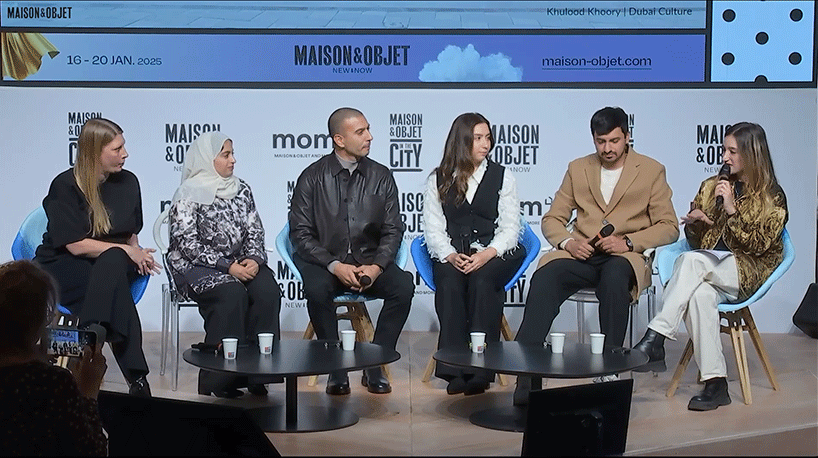
Design made in Dubai and the new codes of its flourishing creative scene moderated by designboom | image courtesy of Maison&Objet
crafting dubai’s design identity
During the designboom talk at Maison&Objet, Khulood Khoory, Projects and Events Director at Dubai Culture Arts and Authority, reflects on how Dubai’s design industry has evolved over the past decade, experiencing a surge in platforms and government initiatives aimed as supporting creative talent. ‘We celebrated the 10th year of Dubai Design Week this year, which is a great milestone,’ she says. Over the years, the city has developed into a collective creative incubator, developing ecosystems and entire districts to support both emerging and established creative talents in tandem with the fabrication industries and creative economies.
Across its various commercial sectors, including construction and technology, Dubai is often recognized as a city of innovation. Yet, Khoory emphasizes, ‘innovation doesn’t always mean high-tech’, a sentiment echoed across the practices of each of the panelists. Mette Degn-Christensen, Director of Downtown Design which runs in parallel to Dubai Design Week, also noted the significance that heritage plays in the city’s design narratives and identity. There persists a strong undercurrent of designers working with vernacular materials and typologies to devise design solutions that contribute to building sustainable ecosystems.
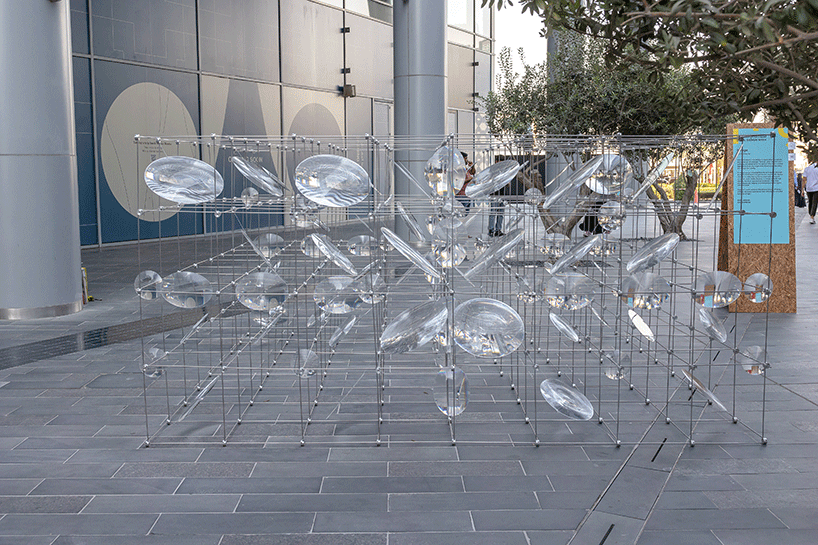
image courtesy of Khulood Khoory | Dubai Culture
bridging heritage and innovation for sustainable solutions
Speaking to each of their own practices, the panelists emphasize that alongside this focus there is also a growing movement towards human-scale and culturally rooted design. ‘There has been a significant move towards sustainability all over the world, but in Dubai, it’s become more of a sustainability of culture as well as regarding the environment,’ notes Lina Ghalib. According to the product and furniture designer, creatives in the region are seeking ways to return to their roots and integrate them into contemporary design. Notably, they are embracing local materials and techniques and experimenting with them in distinct expressions. Ghalib’s own studio PlyPalm reinterprets a raw, traditional building material, using palm branches to create modern furniture and interiors. She affirms that technology plays a crucial role in the process of understanding, experimenting, and implementing such innovative design solutions for contemporary contexts.
Elias El Hage adds how his studio Karim+Elias has been working with geo-heritage and reviving the ancient technique of rammed earth construction, using desert sand to create tactile sculptures and contemporary interior objects. ‘For us, innovation meant reinvention – reimagining how the ancient material was used and applying it to a new vernacular; how people live today.’ Majid Al Bastaki, on the other hand, finds inspiration in the city’s urban fabric, both its large scale developments and the more nostalgic codes of reference remaining in between them. ‘I always try to integrate the [old narratives] of Dubai into the products that I create in the studio,’ he shares. From his architectural photography to his furniture design, his work draws inspiration from elements such as the patterns of weathered metal doors, the region’s palm trees, and the desert dunes.
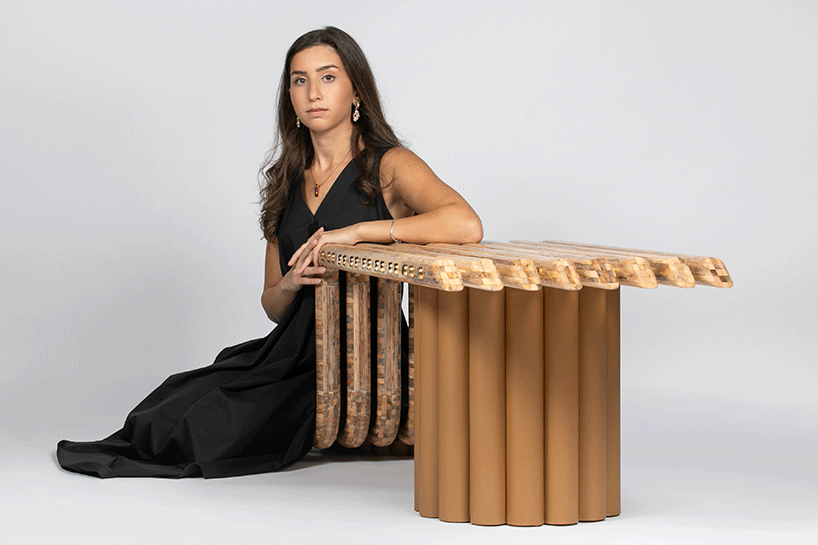
Yereed. Lina Ghalib. 2020. 180 x 50 x 45 cm. ply palm, wood, stainless steel, leather | image courtesy of Tashkeel. photography by Jalal Abuthina
cultivating local talent within a global design hub
As Dubai continues to position itself on the international design stage, Khulood Khoury explains how platforms like Downtown Design and initiatives such as Al Quoz Creative Zone are continually fostering local talent while attracting global attention. ‘Now, the world is also looking at the UAE, Dubai, as a hub to the wider Middle East,’ adds Mette Degn-Christensen. The young city presents significant opportunities for brands in the surrounding Arab world to engage in cultural exchange, expanding the regional network, while integrating them into the global sphere.
Majid Al Bastaki and Mette Degn-Christensen also emphasize that this growth has been accelerated by Dubai’s uniquely collaborative creative culture, nurturing independent designers or small scale studios to grow very quickly. The support from its institutions and government initiatives, too, becomes a catalyst for the designers, for instance with initiatives such as Tanween by Tashkeel (of which Majid Al Bastaki and Lina Ghalib are participants) which offers year-round mentorship on building a commercially viable design brand. This rapid growth is also reflected in the city’s strengthening manufacturing ecosystem, which emphasizes more local, contextualized, and sustainable development. ‘So much more is going to happen in that field of being homegrown at the industrial level as well,’ says Mette Degn-Christensen. ‘That’s also another level of sustainability and another level of support, to create platforms, societies, and communities that can connect designers and fabricators together,’ mentions Lina Ghalib.
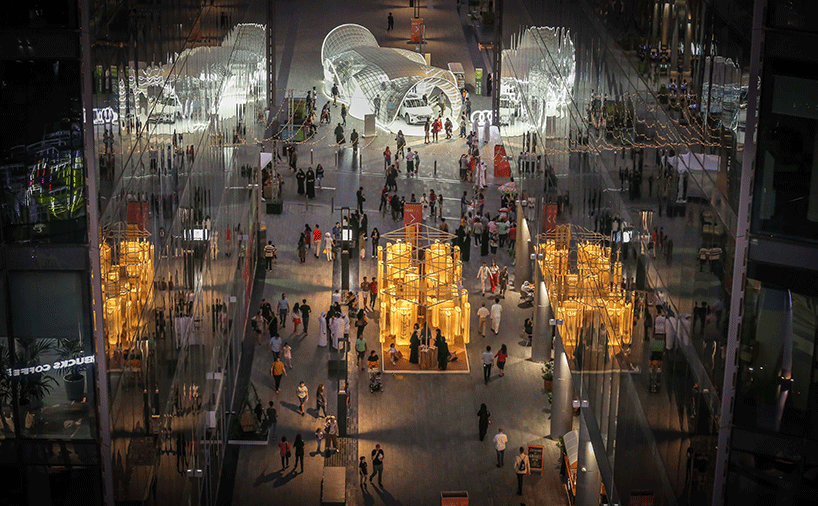
visitors at Dubai Design Week 2019 | image courtesy of Mette Degn-Christensen
a creative economy supporting grassroots design initiatives
Looking ahead, Dubai’s creative leaders envision the city’s creative economy strengthening while establishing its presence further on the global stage. ‘We announced last year our new design sector strategy for 2033, so we have ambitious visions for the to grow into a global hub for design, but as well as to really support our grassroots design initiatives’ says Kholoud Khoory. Ultimately, the panelists agreed that Dubai’s design present and future are driven by a positive mindset of constant evolution. ‘There’s no Plan B in Dubai. It’s only Plan A,’ shares Elias El Hage.
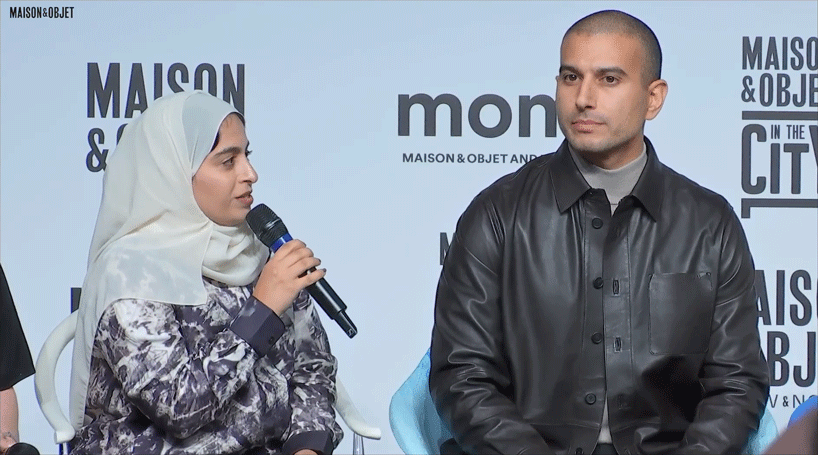
Khulood Khoory and Elias El Hage | image courtesy of Maison&Objet
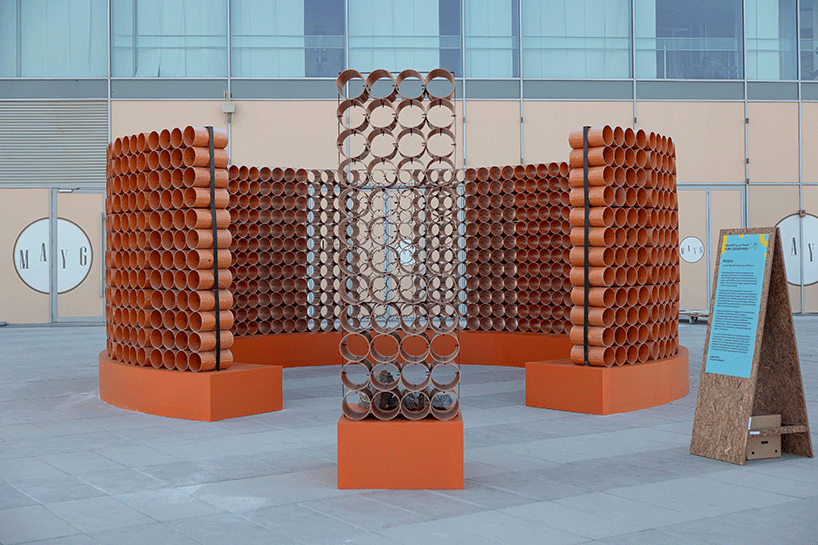
image courtesy of Khulood Khoory | Dubai Culture



